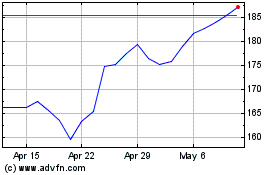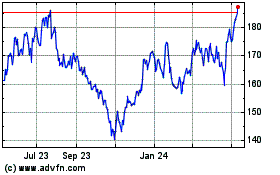With the whole world increasingly going mobile, top phone makers
such as Samsung, LG, Motorola, Apple (AAPL) and
Research In Motion (RIMM) are scrambling to bring
smarter devices to the market. In fact, phone makers are touting
screen size, resolution, virtual or real QWERTY keyboards, video
conferencing, recording and streaming, social networking, office
integration and what not to boost sales.
While our parents may have considered a phone good if it offered
noise-free, good-quality sound, we are more on the lookout for
contacts management, social networking integration and media
support, while our kids would rather be using the device to listen
to music, capture and stream video and play games. Or that is what
the phone companies would like us to do. And considering the level
of competition in the market, we can’t really blame them.
But despite these efforts, handset makers are fast running out
of these “special” treats that could enthrall the customer. This is
because everyone knows that competition is at their heels and every
new version of the phone has a very limited shelf life. They
therefore have to balance their desire to bring out the best phone
in a particular design cycle with the need to build further for the
next version.
Judging the Book by Its Cover
A look at some of the latest devices from the leading handset
makers would be enlightening. On the face of it, they are all
pocket-size and similar in weight, although the ones based on
Google’s (GOOG) Android OS generally use more
plastic, are slightly bigger, sport larger displays that often come
covered with Corning’s (GLW) Gorilla Glass. On the
other hand, Apple’s iPhone is more compact and made out of solid
stuff like glass and steel.
Therefore, dropping a Samsung device would be relatively less
eventful than dropping an iPhone. On the other hand, the iPhone
feels compact, looks pricier and is also kinder on the pocket
seams.
Again, if you want variety, the many Android devices (HTC and
others also make some hot-selling devices) could give you some. But
if you want a status symbol, the iPhone is for you.
Let’s also not forget Blackberry, which looks plain and feels
cumbersome in comparison to the others.
The Window to the Soul
All of the latest devices come with advanced displays and
considerable focus on image quality. However, while the
Android-driven larger devices come with AMOLED screens that pack
more pixels overall, pixel density on the iPhone is slightly
greater, enabling comparably beautiful images.
The problem with the Blackberry is that despite its TFT
capacitative touchscreen (meaning that it requires less pressure),
the screen size is not big enough to enjoy the
experience.
The Brains Behind the Show
Processor power and speed are comparable across the entire
lineup, with most of the devices using Qualcomm’s
(QCOM) dual-core Snapdragon, running at 1.2 GHz. The Samsung Nexus
uses a dual core chip at 1.2 GHz from Texas
Instruments (TXN), while the Apple iPhone uses the
dual-core A5 processor at 1 GHz.
Storage capacity is where iPhone is still slightly in the lead.
It offers a minimum of 16GB and maximum of 64GB, while Samsung’s
Galaxy Nexus comes in 16GB and 32GB models, but not in 64GB. Both
of these and the recently-released DROID 4 (only 16GB) have much
greater memory than other Android-based models that however allow
additional storage on microSD cards. The latest Blackberry is
somewhere in between, with 8GB of built-in storage.
iPhone’s 512 MB RAM and lack of card support lags the 768 MB RAM
in the Blackberry and HTC Desire S, or the 1GB of RAM in the HTC
EVO 3D, Galaxy Nexus and DROID 4, all of which also support SD
cards.
Despite these differences, the iPhone’s performance is not
remarkably different from the others. On the other hand, the higher
in-phone memory comes in handy, since the majority of software
still needs to be stored on the phone itself. Additionally, iPhone
users can use iCloud services.
Another positive for the iPhone is that it doesn’t get easily
run down, or not as easy as the others anyway. Only Samsung Galaxy
Nexus offers comparable battery life.
The Heart of the Matter
Specs aside, what really drives users to a phone and keeps them
there is the “coolness” of the device. This could come from a few
things other than the look and feel, such as the user interface
(ease of use), connectivity and social integration with the minimum
of fuss. Thus we come to the operating system (OS).
Apple’s operating systems have just got better over time and the
iOS 5 iteration brings the latest and greatest. It includes a new
Safari web browser with superior browsing using HTML 5, Siri voice
recognition, enhanced multi-tasking, an efficient iTunes app store
and iCloud support.
In contrast, the Android 4.0, dubbed Ice Cream Sandwich (only
available on Galaxy Nexus so far) has done a good job of improving
the OS, and introducing multi-tasking and voice recognition.
However, while apps for Android continue to thrive, Apple remains
in the lead here.
Blackberry remains a good system, also offering most of the
above features, but when we are splitting hairs, we’d have to say
that it lags the other two.
From Ice Cream to Mango
Microsoft (MSFT) announced its famous Mango
(WP7.5 OS) at a time when the existing players were already doing
fierce battle. Mango appears to be a work of art, with a fantastic
user interface that is second to none.
It also offers advanced multi-tasking, superior contact
management, efficient image search, enhanced social networking and
built-in document editing. The browsing experience is comparable to
iOS 5. What's more, the efficient use of resources and energy also
extends the battery life significantly (better than iOS
5).
Although the company has next to no market share in the U.S.,
Microsoft is by no means a greenhorn. In fact, the company knows
better than anyone else how to get kicked out (it’s been there).
This time round it has partnered with Nokia (NOK),
the once leading smartphone vendor, HTC and others. When
Mango-based Nokia phones hit the shelves next year, Microsoft is
going to win big time.
The Smart Move
A few years back, Nokia was the leading handset maker, with RIMM
and Apple playing catchup. Microsoft was a non-entity, struggling
with WinMo and Google was focused on search.
But today, Android is the hottest-selling OS, RIMM’s growth
rates are negative, Apple’s growth rates are only slightly
positive, Nokia is not a major player (ComScore) and Microsoft has
introduced a dream OS. Also, Asian device makers are seeing
phenomenal success.
It looks like the stage is set to make IDC and Gartner’s
estimates a reality. Both research firms see Android as the leading
platform in 2015 (with nearly a 50% market share) followed by WP
(with around 20%), iOS (close on its heels) and then Blackberry.
The only difference is that IDC’s estimates are a few points more
conservative for Android and a few points more optimistic for
Blackberry.
While some could baulk at the idea, we would bet on Microsoft as
the one with the greatest growth potential. We think that although
Apple has a slight edge right now, Microsoft, along with Google is
likely to be the most significant beneficiary of growth in
smartphones over the next few years.
APPLE INC (AAPL): Free Stock Analysis Report
CORNING INC (GLW): Free Stock Analysis Report
GOOGLE INC-CL A (GOOG): Free Stock Analysis Report
MICROSOFT CORP (MSFT): Free Stock Analysis Report
NOKIA CP-ADR A (NOK): Free Stock Analysis Report
QUALCOMM INC (QCOM): Free Stock Analysis Report
RESEARCH IN MOT (RIMM): Free Stock Analysis Report
TEXAS INSTRS (TXN): Free Stock Analysis Report
Zacks Investment Research
Texas Instruments (NASDAQ:TXN)
Historical Stock Chart
From Jun 2024 to Jul 2024

Texas Instruments (NASDAQ:TXN)
Historical Stock Chart
From Jul 2023 to Jul 2024
